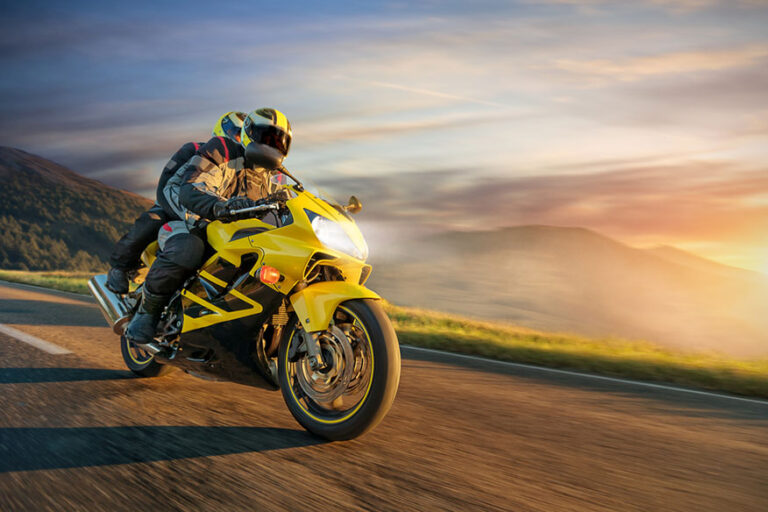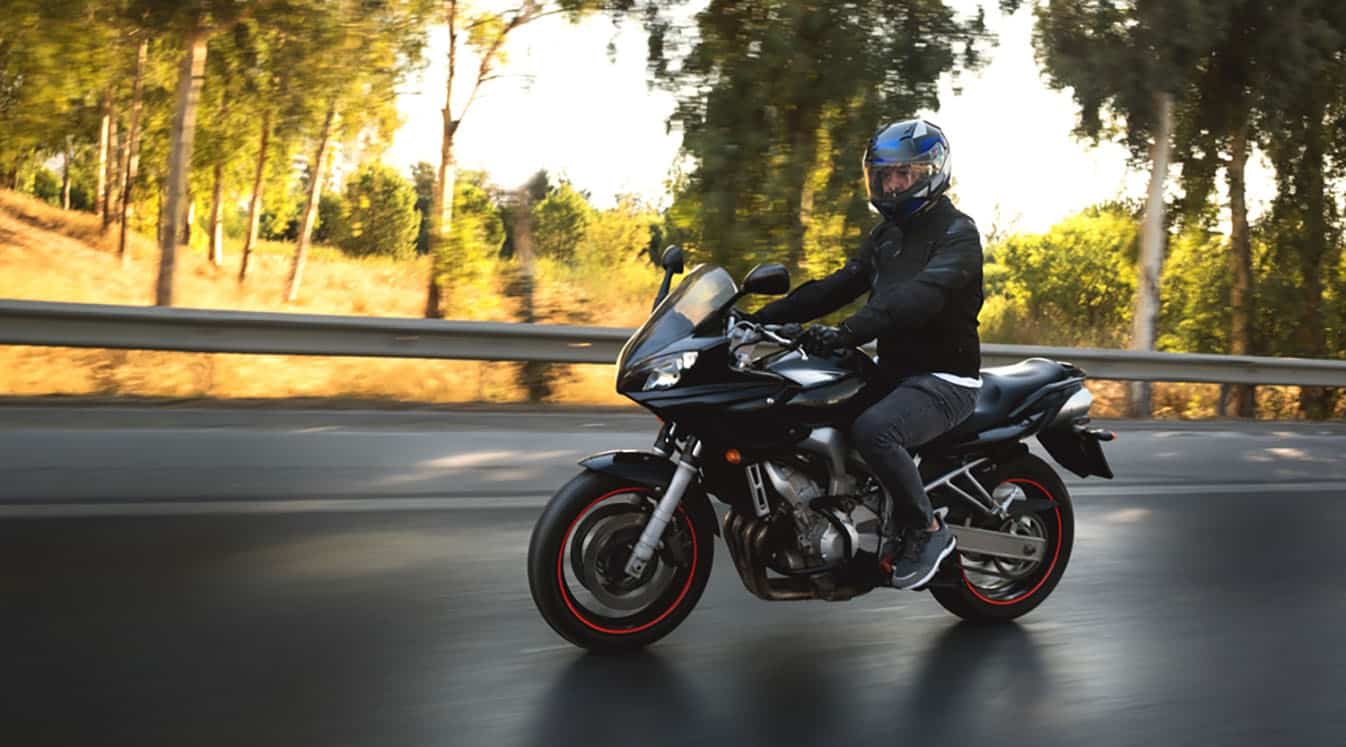Walk into any motorcycle shop, and you’ll find a mix of naked and sport bikes. Most manufacturers offer naked versions of their top-selling models, giving you no shortage of options to consider. Some riders will debate the two until they are blue in the face, but each style of motorcycle is suited for a particular riding style. They also vary in price, aesthetics and usability, appealing to different types of riders.
Use this guide to learn the difference between a naked bike vs. a sport bike.
What Is a Naked Bike?
A naked bike is a motorcycle without fairings, the sleek panels that cover the front and sides. The underlying components are often exposed, with an uneven surface that highlights the structural design of the bike. Not all motorcycles without fairings are considered naked. These bikes usually come specially designed by the manufacturer as a stylish alternative to the traditional sport bike.
Once you choose a model style, learn about the differences between an automatic vs. manual motorcycle.
Naked Bike Pros
Naked bikes are known for their barebones aesthetic, which can be a pro or a con, depending on your preferences. They come with better torque at lower RPMs to help you accelerate on busy streets. If you’re riding in the city, use motorcycle helmet speakers that automatically adjust to the surrounding noise level to hear important traffic sounds.
Beginners will enjoy being able to sit up straight when riding, which makes long-distance riding much more comfortable. Naked bikes come with straight, raised handlebars and forward-positioned footrests.
Naked models also cost around $500 less than their full-fairing counterparts because they contain fewer, smaller casings.
These bikes also tend to get better mileage — especially in the city.
Find Motorcycle Helmet Speakers with Automatic Volume Adjustment
Naked Bike Cons
The lack of fairings exposes the engine to more dust and debris, which can lead to rust. It’s important to shield the bike from the rain and snow.
Not having fairings also increases drag at higher speeds and may affect your mpg. Naked bikes also don’t go as fast as sport bikes.
You’ll also need a windshield to drive on the highway.
What Is a Sport Bike?

Source: Jag_cz/Shutterstock.com
A sport bike is a model with all its fairings attached, coating it in a smooth, aerodynamic outer shell. The expanded coverings leave more room for the brand’s logo and your chosen color palette.
Sport Bike Pros
The fairings protect the motorcycle engine from wear and tear. The smooth, flat surface is much easier to clean than the nooks and crannies on a naked bike.
Sport bikes are more powerful. Some models go over 200 mph, with the Kawasaki H2R hitting 240 mph. The fairings reduce drag for less wind resistance.
They come with better braking, acceleration and handling for mastering tight turns on the racetrack.
Sport Bike Cons
Sport bikes cost slightly more than their naked counterparts, with some going for as much as $35,000, according to Autotrader.
Riding a sport bike isn’t as ergonomic as riding a naked bike. The footrests are further back with lower handlebars. You’ll need to lean over and down with your back arched to get into position. You might get uncomfortable after a few hours unless you have abs of steel.
Sport bikes weigh more than naked bikes, which leads to fewer miles per gallon. They’re not well-suited for long rides. Beginners may struggle to get their footing if they can’t sit straight.
Naked Bike vs. Sport Bike: Which Is Right for You?
Deciding between the two depends on how comfortable you feel riding in the sport position. If you have trouble steadying yourself or suffer from back pain, the naked version is definitely the way to go.
Love long road trips? You’re better off with a naked motorcycle. Naked bikes are also better for commuting and getting around the city.
If you don’t see yourself riding over 100 mph, a sport bike probably isn’t for you. However, if you love the thrill of racing and have plenty of riding experience under your belt, you can’t go wrong with a sport bike.

Regardless of your preferred style, use motorcycle helmet communication to keep in touch with your companions without taking your eyes off the road. Just speak normally to strike up a conversation, and the device will take care of the rest.
Use Motorcycle Helmet Communication to Talk Hands-Free
Both options come with die-hard fans. They speak to different schools of thought and riding techniques. Keep these subtle yet essential differences in mind to find the right style of bike.





